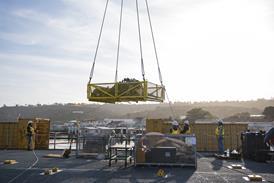Both of Japan's major carriers sense the worst could be over for their national economy. A sign of confidence perhaps, is that Japan Airlines (JAL) is expecting to pay its long-suffering shareholders their first dividend for seven years when this 1998/9 financial year ends in March.
All Nippon Airways (ANA) is also cautiously optimistic. "We seem to have hit the bottom," says Koji Yamashita, ANA's executive vice-president for marketing. Speaking at the annual meeting of the Association of Asia-Pacific Airlines in Manilla, he believed that the economy could see the start of an upturn by mid-1999 (see report page 40).
Japan is in its deepest recession since the Second World War, plagued by massive bank debts and consumer fears. Conditions have grown so bad that Japan slashed its own economic outlook this fiscal year from a positive 1.9% to a negative 1.8%. The International Monetary Fund predicted Japan's economy would shrink by 2.5% in calendar year 1998 and grow by only 0.5% in 1999.
JAL claims it has already taken these gloomy forecasts into account and will still end this fiscal year with a profit. Chief executive Isao Kaneko points out that the airline started the fiscal year predicting a ´28 billion ($240 million) operating profit and a ´14 billion bottom line. "Now our prediction is a ´16 billion operating profit and a ´10 billion bottom line profit," he says. Enough to pay a dividend. ANA is more gloomy, however, not promising dividends for another couple of years.
Part of the gloom seems to come from ANA's dominant position in the Japanese domestic market, where growth will be slow at best. However, JAL has two-thirds of its revenues from international routes and is encouraged by reports that some economies in the region are improving. "Indonesia and Malaysia will have to wait a couple of years. But Thailand is going to be revitalised very quickly and Korea is already," says Kaneko. He has not yet detected any traffic improvement in but predicts that, in some countries, "demand will pick up next fiscal year".
ANA's Yamashita complains that the bigger problem is not so much traffic but the lack of premium passengers. Yields have fallen steadily over the past six months he says. In its first half results, JAL also reported a 5.3% drop in international yield due to lower fares and class downgrades. In response both carriers have embarked on unprecedented levels of cost cutting.
New domestic competition is also a worry. Hokkaido International Airlines, known as Air Do, planned to launch three daily nonstop flights between Tokyo and Sapporo - the world's busiest route - just before Christmas. It will join Skymark Airlines, which began Tokyo-Fukuoka flights in September. Both startups are slashing fares by up to 50%.
Yamashita welcomes the end to 40 years of "cosy regulation", while JAL too seems sanguine about these newcomers. Kaneko believes lower fares will attract more passengers. "There will be enough to go around," he says.
Source: Airline Business























